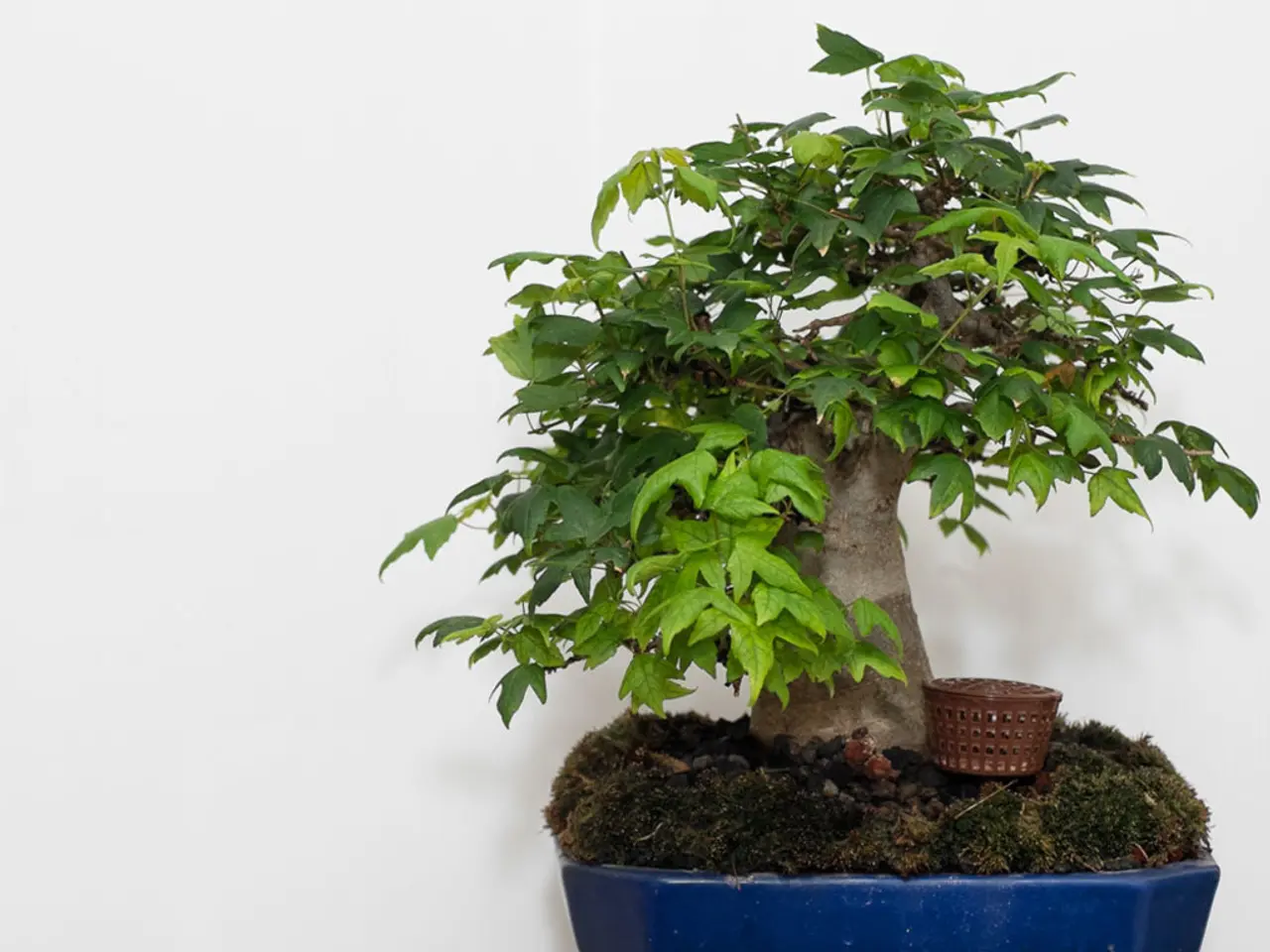Exploring the Ancient Roots of Bonsai: An Epochal Voyage Through the Past Centuries
The art of bonsai, a miniature living sculpture that embodies the pursuit of beauty, harmony, and balance, has its roots in ancient China over a thousand years ago. Originally called "pun-sai," "penjing," or "pening," this ancient practice was a means of symbolizing harmony with nature and expressing philosophical and spiritual ideas about the cosmos in miniature form.
In early Chinese bonsai, the style was less standardized and more free-spirited, often larger and more elaborate. It was associated with spiritual and aesthetic values, and miniature landscapes included trees, rocks, and water features to create naturalistic scenes. Bonsai was valued for representing resilience and harmony, often depicting trees thriving in harsh environments, like mountain crevices and rocks, exemplifying strength and endurance. The art was significant enough culturally to be depicted in Chinese murals as early as the Tang Dynasty (618–907 AD).
The practice of bonsai spread to Japan where it was adopted and transformed, particularly influenced by Zen Buddhism. Zen Buddhism emphasized meditation, simplicity, and harmony with nature, which resonated deeply with the art form. In Japan, bonsai evolved into a more refined and highly standardized art form focusing on aesthetics such as balance, asymmetry, and the symbolism of age and impermanence.
Bonsai in Japan became objects of meditation and were incorporated into Zen gardens to aid spiritual focus. The Japanese appreciated and developed techniques to give bonsai an aged, weathered appearance reflecting the deep philosophical concept of impermanence or the mutability of all things. The earliest Japanese records of bonsai appear around the early 14th century (1309 AD), indicating a mature tradition by that time.
Japanese bonsai focused on the artistic creation of miniature trees that resemble natural trees shaped by harsh environments, emphasizing simplicity and elegance compared to the more elaborate Chinese tradition. Both cultures contributed unique aspects that shaped bonsai into the living art admired worldwide today.
Caring for a bonsai tree requires patience and attention. When it comes to watering your bonsai tree, water thoroughly when the top inch of soil feels dry to the touch, but avoid overwatering. The ideal temperature range for bonsai trees varies by species, but generally falls between 65°F to 75°F (18°C to 24°C) for most temperate trees. Ideal containers for bonsai trees include unglazed ceramic, terracotta, or wood, as they promote healthy root growth.
Growing bonsai trees indoors with artificial lighting is possible, but requires careful consideration of lighting intensity, duration, and spectrum. The human connection to nature is palpable in every carefully pruned branch and tenderly nurtured leaf of a bonsai. The art's ability to evoke a sense of wonder and awe has enthralled people from ancient civilizations to modern-day enthusiasts. Bonsai, a timeless art form that transcends cultural boundaries, continues to capture the hearts of people across the globe.
References:
[1] Kawashima, T. (2010). The Bonsai Book: A Comprehensive Guide to Creating, Collecting, and Enjoying Bonsai. Tuttle Publishing.
[2] Matsushima, M. (2011). Bonsai: The Art of Miniature Trees. Tuttle Publishing.
[3] Saito, S. (2003). Bonsai: The Art of Miniature Trees. Kodansha International.
[4] Yoshimura, S. (2009). Zen and the Art of Bonsai: A Complete Guide to Caring for the Japanese Art of Miniature Trees. Tuttle Publishing.
[5] Yoshimura, S. (2014). Bonsai: The Complete Guide. Tuttle Publishing.
A hobbyist might appreciate both 'home-and-garden' magazines and books about 'lifestyle' topics, including articles on 'gardening' techniques such as bonsai care. Incorporating a bonsai tree into one's living space can bring a touch of miniature yet profound 'lifestyle' art that embodies the essence of harmonious coexistence with nature, reflecting both Chinese and Japanese aesthetic values.




